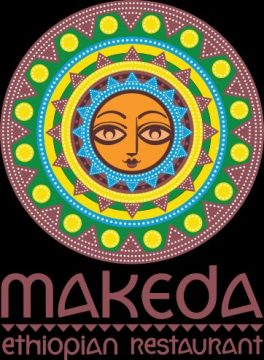
Makeda Ethiopian Restaurant Photo credit: http://www.makedarestaurant.com/
Location: 516A S Van Dorn St, Alexandria, VA 22304
Makeda Ethiopian Restaurant is named for Makeda, the Queen of Sheba.
The Queen of Sheba “is the monarch mentioned in the Bible and then in later works who travels to Jerusalem to experience the wisdom of King Solomon (c. 965-931 BCE) of Israel first-hand. The queen is first mentioned in I Kings 10:1-13 and in II Chronicles 9:1-12 in the Bible, then in the later Aramaic Targum Sheni, then the Quran, and finally the Ethiopian work known as the Kebra Negast; later writings featuring the queen, all religious in nature, come basically from the story as first told in the Bible. There is no archaeological evidence, inscription, or statuary supporting her existence outside of these texts.” Ancient. eu
The story of the Queen of Sheba appears in four religious texts, the Torah, the Bible, Qur’an and the Kebra Nagast from Ethiopia. “Described in the Bible as simply a Queen of the East, modern scholars believe she came from the Kingdom of Axum in Ethiopia, the Kingdom of Saba in Yemen, or both. Their main clue is that she brought bales of incense with her as a gift; frankincense only grows in these two areas. Both countries claim her as theirs. Given that they are separated by only 25 kilometers of water, both could be right….” www.pbs.org/mythsandheroes/

Kebra Nagast Photo: Wikimedia Commons
Ethiopia’s national epic, the Kebra Nagast or Glory of Kings was written in Ge’ez during the reign of Yekuno Amlak in the 14th century. Far longer and more elaborate than the Bible story of the Queen of Sheba, the text claimed “(1) that Sheba, also known as Makeda, was an Ethiopian queen; (2) that she gave birth to a son by Solomon, a boy by name Menilek; (3) that Menilek, after visiting his father in Jerusalem, took the Ark of the Covenant to Ethiopia which is specifically referred to by that name; and (4) that it was from Menilek that the country’s later emperors were all descended” (Pankhurst, 54).
“The Kebra Nagast is thus a national epic that glorifies a particular monarchical line and tradition and also indelibly associates Ethiopa with the Judeo-Christian tradition. The epic soughto arouse patriotic fellings of uniqueness, or glorify Ethiopia, and to provide a proud identity.The myth surrounding the “restored” Solomonic dynasty provided the basis necessary for a renaissance in church and state. Under the new dynasty’s banner, Ethiopia expanded southward, confirming Amharic and Christianity as integral parts of the imperial tradition dominating the government until late in the twentieth century….” (Marcus, 18-19).
“The Queen of Sheba may be the most famous woman in literary history, having been depicted for over 2,500 years in three great world traditions: Judaism, Christianity, and Islam. With careful readings of the many colorful tales about the Queen of Sheba, I document, for the first time, the development of the legend of an African Queen of Sheba, which culminated in the fourteenth-century Egyptian and Ethiopian novel the Kəbrä Nägäśt. Its African Christian portrayal of the Queen of Sheba differs radically from other versions in depicting a queen wiser, purer, and more powerful than any man, one so strong she could take the Ark of the Covenant from King Solomon ” (Wendybelcher.com).
Resources
Belcher, Wendy. “Black Queen of Sheba : a Global History of an African Idea.” Wendybelcher.com Accessed 9/16/2020.
“Great Myths and Legends: The Queen of Sheba.” Penn Museum, April 21, 2016. Youtube Accessed 9/16/2020.
Marcus, Harold. A History of Ethiopia. University of California Press, 1994 and 2002.
Mark, Joshua. “Queen of Sheba.” Ancient History Encyclopedia. 3/26/2018 https://www.ancient.eu/Queen_of_Sheba/ Accessed 9/15/2020.
Pankhurst, Richard. The Ethiopians A History. Blackwell, 2001.
“Queen of Sheba.” Encyclopedia Britannica. Encyclopedia Britannica Inc., https://www.britannica.com/ Accessed 9/15/2020.
